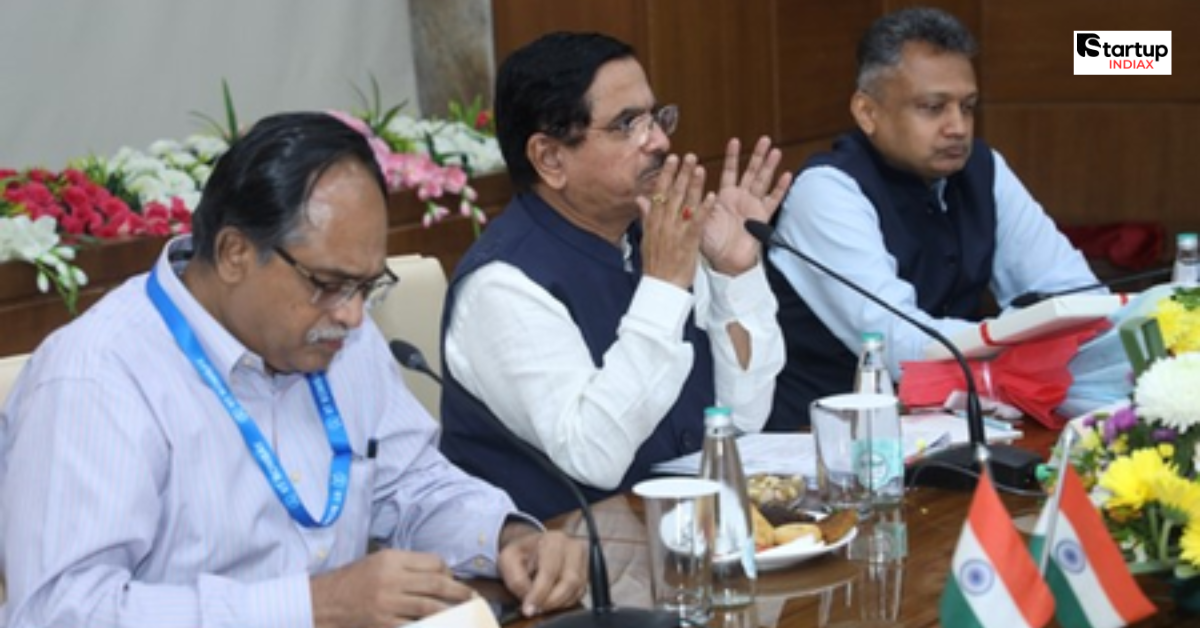[acf field=”ai_summary”]
The IIT-B startup builds India’s most efficient solar cell, achieving an exceptional 29.8% conversion efficiency—a remarkable feat that is set to redefine India’s clean energy landscape. This innovation could accelerate India’s renewable energy adoption, reduce carbon emissions, and boost self-reliance in the solar sector. Backed by authoritative voices like Pralhad Joshi, India’s Minister of Coal, this breakthrough emphasizes the country’s push toward a sustainable future. In this article, Startup INDIAX explores the technology behind this record-breaking solar cell, its far-reaching impacts, and why entrepreneurs and digital professionals should watch this space closely.
Table of Contents
1. What is the breakthrough behind IIT-B startup’s 29.8% conversion solar cell?
The IIT Bombay-based startup developed this cutting-edge solar cell by leveraging advanced materials and innovative fabrication techniques. Unlike conventional silicon-based solar panels averaging 15-20% efficiency, this cell’s 29.8% conversion efficiency means more sunlight converts into usable electricity. This leap is possible due to optimized photovoltaic materials, superior light absorption, and reduced energy losses during conversion.
Industry experts concur this is a crucial step towards scalable, efficient solar power generation in India. Such breakthroughs foster homegrown technology innovation by reducing reliance on expensive imports.
2. How does 29.8% conversion efficiency compare to existing solar technologies in India?
Current commercial solar panels in India often have efficiencies between 15% and 22%. The new IIT-B solar cell crossing 29.8% is significantly ahead of market averages and aligns with the highest global efficiencies, matching or surpassing those of leading international firms.
Higher efficiency translates into more power generation per square meter, making solar installations cheaper and more space-efficient. This matters immensely in space-constrained urban and rural settings across India.
3. Why is this solar cell a “game-changer” for India’s renewable energy goals?
India aims to achieve 500 GW of renewable energy capacity by 2030, with solar power being a pivotal component. The startup’s advancement directly supports this target by enabling:
- Lower costs owing to better energy yields
- Decreased dependence on fossil fuels and imports
- Enhanced energy security and grid stability
- New export opportunities through technology leadership
Pralhad Joshi, India’s Minister of Coal, hailed this innovation as a “game-changer” pointing to its potential to propel India’s energy transition faster and more sustainably.
4. What are the five surprising impacts of this innovation on India’s energy sector?
1. Reduced Solar Installation Costs: Higher efficiency means fewer panels and less land are needed per unit power, lowering capital and operational costs.
2. Boost to Make in India Initiative: This homegrown innovation strengthens India’s manufacturing ecosystem, encouraging investments and skilling.
3. Accelerated Electrification in Remote Areas: Efficient solar cells improve off-grid solar power viability for rural electrification and telecom towers.
4. Environmental Benefits: With more efficient solar energy, greenhouse gas emissions can be significantly cut, aligning with India’s climate commitments.
5. Stimulating Startup Ecosystem: This success story is expected to inspire more Indian startups to invest in deep tech and clean energy innovations.
5. How will this advancement influence startups and the clean tech ecosystem in India?
The IIT-B solar cell breakthrough acts as a beacon for Indian startups targeting sustainability challenges. It signals growing opportunities in R&D, manufacturing, and deployment within the clean energy sector.
With government backing and market validation, startups can leverage this momentum to attract investments, form strategic partnerships, and scale technologies. The innovation also emphasizes fostering multidisciplinary talent in materials science, engineering, and digital technologies.
6. What are the future prospects and challenges for this solar technology?
While promising, scaling production and integration with existing solar infrastructure remain challenges. Continuous innovation, cost reductions, and government incentives will be critical. Future research may focus on further boosting efficiency, durability, and lowering environmental impacts during manufacturing.
Regulatory support and awareness campaigns will ensure faster adoption by both commercial and residential consumers.
7. Where can readers learn more about India’s clean energy innovations?
Startup INDIAX regularly features in-depth news, interviews, and analysis on India’s evolving energy landscape. Entrepreneurs and digital professionals can explore the latest stories, expert insights, and startup journeys shaping the country’s sustainable future.
Conclusion: Join the Solar Revolution with Startup INDIAX
The IIT-B startup builds India’s most efficient solar cell with 29.8% conversion is a monumental stride toward transforming India’s clean energy future. Are you inspired by innovations accelerating sustainability? Share your thoughts, questions, and startup stories in the comments below. Also, explore more cutting-edge tech stories on Startup INDIAX — your gateway to India’s startup ecosystem.

